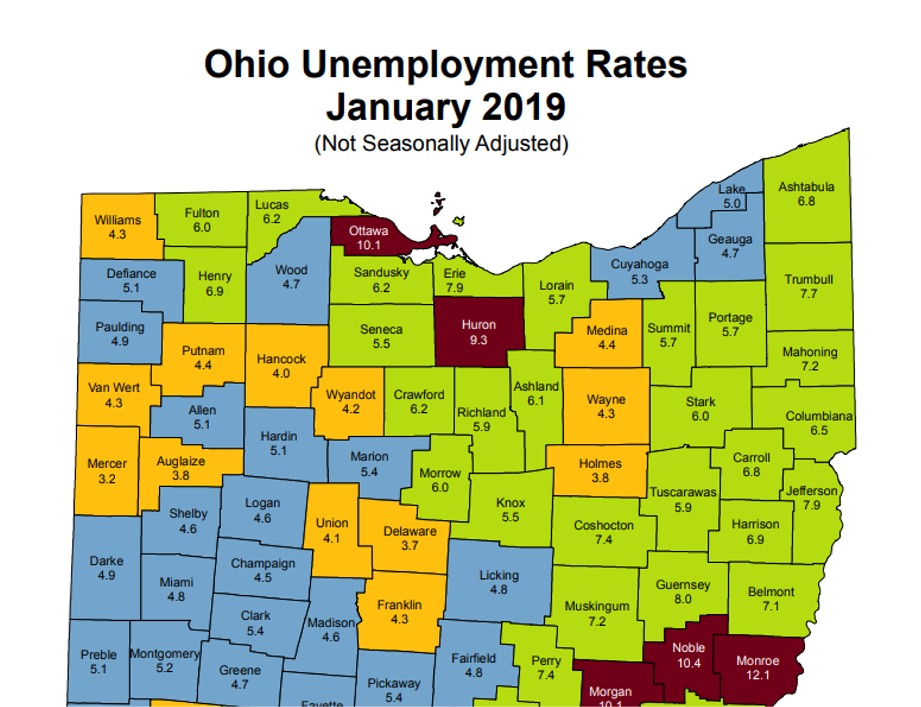By 1808Delaware
Ohio’s minimum wage will increase by 25 cents starting January 1, 2025, marking the latest adjustment to counter rising inflation. While this change is welcomed by some as a step toward economic stability, it highlights the ongoing challenges faced by low-wage workers, particularly in counties like Delaware, where the cost of living far exceeds the new wage rate.
New Minimum Wage Rates for 2025
The upcoming increase will set Ohio’s minimum wage at:
- $10.70 per hour for non-tipped employees, up from $10.45.
- $5.35 per hour for tipped employees, up from $5.25.
This adjustment applies to workers employed by businesses with annual gross receipts exceeding $394,000. Companies falling below this threshold, as well as employees aged 14 and 15, remain tied to the federal minimum wage of $7.25 per hour.
Why the Change?
The increase is the result of a constitutional amendment passed in 2006, which mandates annual adjustments to the state’s minimum wage based on inflation rates. While this policy helps ensure wages keep pace with the cost of living, critics argue the increments fail to close the gap between minimum and living wages.
Living Wage Disparity in Ohio
Despite the wage increase, many workers in Ohio will still earn far below the living wage needed to cover basic expenses. In Delaware County, for example, a single adult requires an annual income of approximately $47,000—or $22.60 per hour for a full-time worker—to make ends meet. This stark contrast illustrates the economic challenges facing minimum wage workers in higher-cost areas.
In neighboring Ashtabula County, where the cost of living is lower, the required annual wage is about $36,900, but even this figure remains far above the adjusted state minimum.
Economic Impact
The new minimum wage will directly or indirectly impact an estimated 313,300 Ohioans, according to the Economic Policy Institute. For these workers, the increase could mean slightly improved financial stability, but in regions like Delaware County, the relief may be minimal due to the area’s higher living costs.
Local businesses could also feel the effects. While some employers express concerns about potential financial strain, others see wage increases as an opportunity to reduce employee turnover and boost productivity.
Future Wage Discussions
The 2025 adjustment isn’t the end of Ohio’s minimum wage conversation. Advocates are pushing for a ballot initiative to raise the state minimum wage to $15 per hour by 2026. If approved, the proposal would eliminate the sub-minimum wage for tipped workers by 2029 and benefit nearly 1 million Ohioans. Supporters argue this measure is critical for addressing wage disparities and improving economic security for low-income families.
Opponents, however, warn of potential downsides, including higher labor costs for businesses and potential job cuts. The debate underscores the complexities of balancing wage increases with economic growth.
What’s Next for Ohio Workers?
For many Ohio workers, the January wage increase is a step forward but not a solution to broader economic challenges. The gap between minimum and living wages remains wide, particularly in counties with higher costs of living like Delaware. Future proposals to raise wages to $15 per hour could have a transformative effect, but they also bring significant challenges and implications for the state’s economy.
Key Points to Remember:
- Ohio’s minimum wage will increase to $10.70 per hour for non-tipped workers and $5.35 per hour for tipped workers on January 1, 2025.
- Workers at small businesses with gross receipts below $394,000 and those under 16 years old remain tied to the federal minimum wage of $7.25 per hour.
- The living wage in Delaware County is $22.60 per hour, nearly double the new minimum wage.
- A ballot proposal could raise the minimum wage to $15 per hour by 2026, benefiting an estimated 1 million Ohioans.
The upcoming changes and ongoing debates emphasize the need for a nuanced approach to wage policies that address both worker needs and business realities.
Image by Mari-Anna Kosteer from Pixabay










